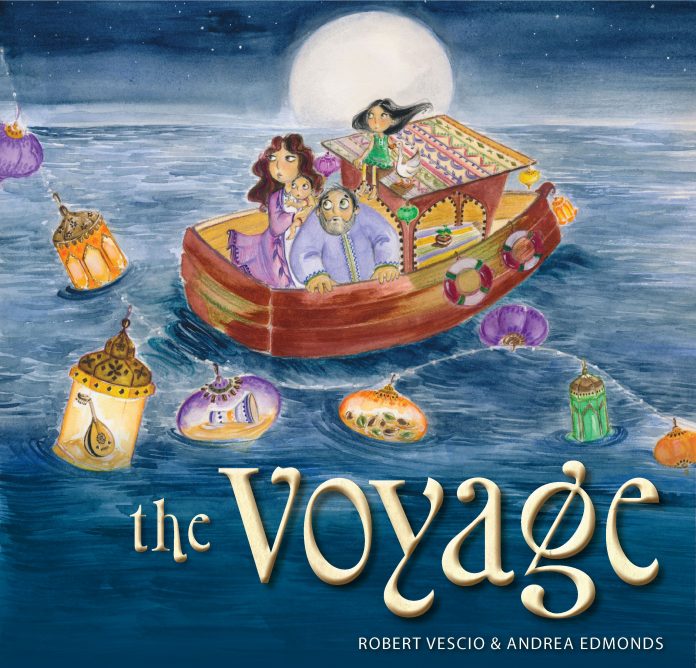These books use evocative imagery and few words to tackle human and inhuman reactions to migration – and illustrating their consequences to younger readers.
The Voyage
by Robert Vescio and Andrea Edmonds
EK Books, 2019, $24.99
The Mediterranean
Armin Greder
Allen&Unwin, 2018, $29.99
In September, the New York Times carried a scathing piece by Australian-based author and Nobel Prize laureate for Literature J.M. Coetzee entitled “Australia’s Shame”. Coetzee ended it thus: “Cross-border migration is a fact of life in today’s world, and numbers will only increase as the earth heats up, former pastures turn to desert, and islands are swallowed by the sea. There are messy but humane – or at least human – ways of reacting to this world-historical phenomenon, just as there are neat but inhuman ways.”
Picture books The Voyage by Robert Vescio and Andrea Edmonds (EK Books) and The Mediterranean by Armin Greder (Allen&Unwin) tackle human and inhuman reactions to migration – illustrating their consequences to younger readers. Both use evocative imagery and few words to show how war and conflict displace individuals and families, and how the trauma of such upheavals is eased or compounded when nations accept or reject them.
The Voyage (for readers 3–8) is the gentler and more positive story – but it would be wrong to suggest it soft-soaps the family’s journey or its hazards. Writer Robert Vescio and illustrator Andrea Edmonds depict the chaos as the family escapes and their joy in finding safety in a new home.
There’s also a book trailer on YouTube that’s worth a look, and teachers notes to stimulate discussion.
The Mediterranean (for readers 12–18) is much bleaker. It delves into the murky waters of the Mediterranean to tell the shocking story of a shared sea that has become a mass grave – with more than 12,000 deaths in the three years from 2015–2017 alone.
Greder offers grim embodiment to what’s often hidden: crates that might be coffins or storage containers for guns, armed militia strafing villages, despairing people forced to flee then crammed onto a boat and set adrift on a forbidding sea.
With more than 65 million people displaced globally, I’m glad The Mediterranean was chosen as an Honour Book in the 2019 Children’s Book Council of Australia Picture Book of the Year awards, as it will give a little more exposure to this troubling issue.
As Alessandro Leogrande says in his informative Afterword, “Each journey starts long before its fateful end on our shores, and is a fusion of expectation, violence, fear, dreams, solidarity. In these images, the link between the responsibilities that lie at a journey’s origin and that pile of bodies at the bottom of the sea is revealed with the utmost clarity.”
At Christmas, we’re reminded Jesus was a refugee, and a vocal advocate of opening our hearts and homelands to those who have less than us.
Books like The Voyage and The Mediterranean can help our young people understand that “Australia’s Shame” is linked to a world of shame – but also that our nation’s “inhuman” approach to refugees and asylum seekers is not inevitable.
Thanks to EK Books we have a copy of The Voyage to give away. For your chance to win – email your name, postal address and how many displaced people there are globally to news@ssh.com.au with the word VOYAGE in the subject line. Entries close Friday December 20.
_______________
books@ssh.com.au





